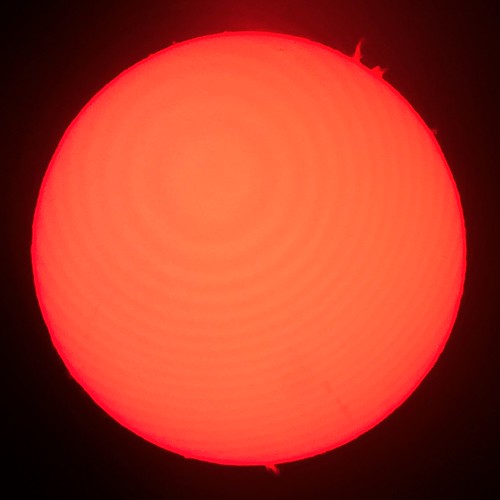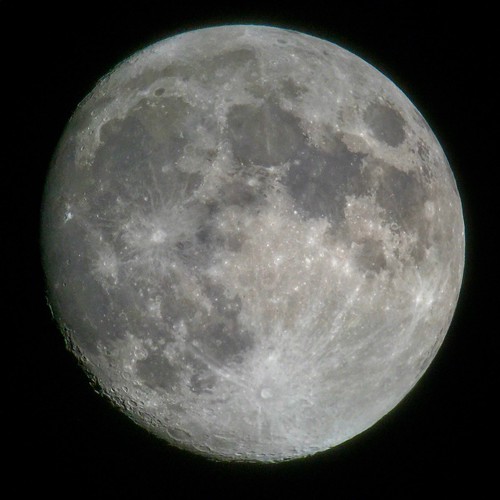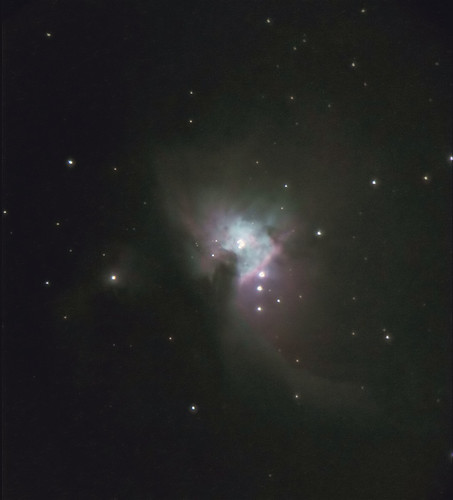For some people, a passion for astronomy starts with a sunset–you’re looking up at the sky, watching as the day slowly comes to an end. Blue bursts into yellow, orange and sherbet pink, melting down into those rich purples and navy until you arrive at the big hurrah: inky blackness being poked to pieces by stars. If you’re lucky, you see the dim presence of planets. And if you’re like many other people sharing the experience, you probably are compelled to take out your camera or phone and a snap picture.
For Canadian Andrew Symes it started with a comet hurtling into Jupiter. At fifteen years old he’d seen a magazine featuring pictures that people took–a collision so powerful that its results were easily photographed with home telescopes. The collision “scarred” Jupiter’s clouds, a solid dot disrupting the rest of the planet’s gassy colored rings. And like the scars on the gas giant it ran into, comet Shoemaker-Levy 9’s impact on Andrew was unforgettable.
Over the past twenty years, Andrew’s relationship with astrophotography has been spotty; his first picture was taken in 1997 with a 35mm camera and it wasn’t until 2006 that he got serious. But even after his resolve hardened, that didn’t mean he had the magic touch to get his photography perfect on the first try. Andrew needed to experiment with all kinds of cameras and lenses. “For years I'd tried to take photos through my telescope by attaching digital cameras to my eyepiece or inserting them directly into my telescope, but the results were never all that great,” he explains. Problems with keeping the device steady and overexposure made getting the beautiful shots he saw other people getting difficult. He faced the same issues with his iPhone as he did with his digital camera: his phone wouldn’t hold steady when he tried to put it up to his telescope.
In 2011 Andrew finally got the breakthrough that he’d been searching for: astronomer Mike Weasner posted pictures on his twitter that he took by attaching his iPhone to his telescope with an adapter. “I quickly ordered a special adapter,” Andrew says, “[it’s] designed specifically for shooting iPhone photos through a telescope.”
There was still a learning curve of iPhone astrophotography that Andrew had to deal with–overexposure and steadiness were a constant issue, but problems with “single-shot” pictures arose. The Earth’s atmosphere deforms and obscures the way that planets appear through telescopes, resulting in only a few mere seconds to get a crisp, clear image. In order to compensate for the atmosphere, Andrew takes 30-second video and then uses a “special stacking software to extract and combine the best individual frames from those videos” in order to create an image that correctly reflects his subject planet.
With more people interested in astrophotography, the number of apps have increased. “There are now special apps like NightCap Pro that allow me to take longer exposures and capture faint objects,” Andrew says. He’s able to snap clear photos of both closer objects in space, like the International Space Station, and far-off celestial bodies like nebulas, galaxies, and star trails. Between improvements of apps and the iPhone’s camera, Andrew “[relies] much more on my iPhone for astrophotography now than my DSLR camera!”

Even though he’s improved over the years, and advancements in technology have aided him, there’s still one major drawback for Andrew’s iPhone astrophotography: “I usually need a bare hand to adjust the settings on my screen...I find it too difficult to do so with gloves - even the kind designed for use with smartphones.” Which can get really annoying during cold, Canadian winter nights. But does that stop him? Not when there’s something that catches his eye. Maybe one of the biggest perks of iPhone astrophotography is that Andrew can do it right from his backyard, and using his phone lets him avoid wasting time with heavy camera equipment. He can pop in and out of his home to snap his pictures and skip freezing his fingers off.
Astrophotography isn’t as difficult as it might seem. “I encourage everyone who has a telescope to try it,” Andrew says. But don’t go overboard with apps and computer software right away–the most important part is keeping your iPhone still, even when you’re a seasoned photographer. Andrew advises to “invest in an eyepiece adapter that will hold your phone steady.” He suggests that you start with practicing on the moon, as it’ll teach you the ins and outs of focus and exposure dynamics in astrophotography.

Once you’ve mastered the moon, you can venture out to objects that are harder to see, like the planets. And with enough practice you’ll be able to take breathtaking shots, and really find the ones that you love, like Andrew’s favorite picture of Saturn. “Growing up, I never imagined that I'd be able to photograph details within Saturn's rings or on its cloud tops,” he says. “It's been amazing to see the results I've been able to achieve with just a telescope and a phone!”
Interested in seeing what else Andrew is up to? Head on over to his twitter, or you can totally lose yourself in his flickr album dedicated to iPhone astrophotography like we did.
